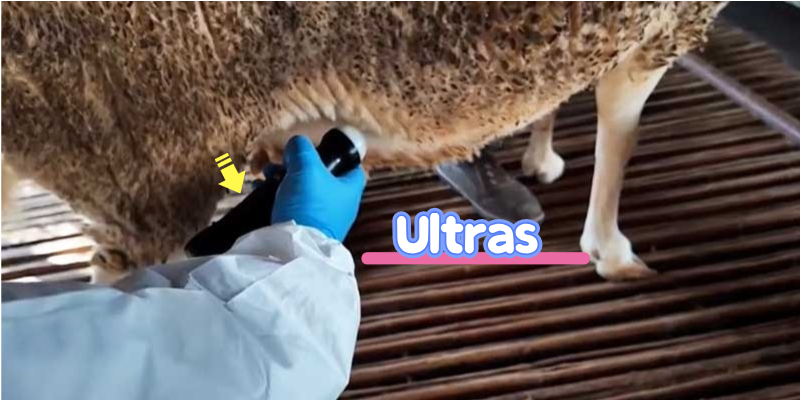Sheep ultrasound machines can be used as a pregnancy detection tool to improve reproductive management of small ruminants in a variety of production scenarios ranging from extensive production systems emphasizing wool production, to intensive production systems utilizing genetics of prolificacy with an emphasis on meat production, to small ruminants. Ultrasound scanning has been shown to be a low-cost, accurate method of determining pregnancy status, stage of gestation and litter size. By grouping animals according t pregnancy status, stage and/or litter size, managers can increase productivity, improve the allocation of farm resources, and improve the health and welfare of their sheep/herds.
Ultrasound machine pregnancy testing for sheep allows for better allocation of feed resources. Separating ewes or based on pregnancy status can remove non-pregnant animals, which can then be culled or fed less due to lower demand. In some production systems, failure to remove non-pregnant animals from the pregnant group will result in obesity. Not only is this a waste of feed resources, but one of the hidden costs may be the inability of these animals to reproduce when re-exposed or a greater risk of ketosis if they become pregnant. In prolific flocks/herds, grouping based on litter size will allow for better allocation of feed resources, especially in the later stages of pregnancy when nutritional requirements will vary most dramatically and change the most based on litter size. Carrying singles could be reduced, redistributing more and higher quality feed resources to feed multipliers. This will result in better pregnancy outcomes across the flock/herd. Fetal counts have the greatest utility in multiply productive flocks/herds compared to flocks with lambing/lambing rates <120%.
Ultrasound machine test results in sheep provide refined feeding to meet animal needs during pregnancy. In intensive production systems utilizing precision feeding management, animals can be fed precisely based on stage of pregnancy and litter size. Using this information to group animals and feed them accordingly will reduce the incidence of metabolic disease and optimize maternal and fetal nutrition.
Fertility management of sheep can be optimized by ultrasound testing. In intensive and extensive production systems, grouping based on number of fetuses and stage of pregnancy provides an opportunity to improve labor efficiency during birth. By separating ewes/dams with potentially greater birthing demands at birth (ewes with multiples are more prone to difficult births and abortion problems) from fewer ewes (ewes carrying singles), resources (labor, favorable birthing paddocks with windbreaks, warmer housing facilities) can be allocated appropriately to achieve optimal birth outcomes.
Ultrasound results determine when to dry lactating animals in parlor milking. The decision to dry lactating animals in parlor milking can be made with knowledge of the state and stage of pregnancy. This allows the animals to be managed in a way that allows for optimal length of drying period for better lactation performance and herd/flock health.
Ultrasound testing allows early detection of pregnant ewes. Early detection of pregnancy permits the sale of non-pregnant animals while they are still at high market value (under 12 months). The ability to breed before one year of age can be used as a selection tool to improve lifetime productivity, as lambs 12-15 months old have been shown to have higher lifetime productivity than ewes that do not.
Post time: May-12-2025




